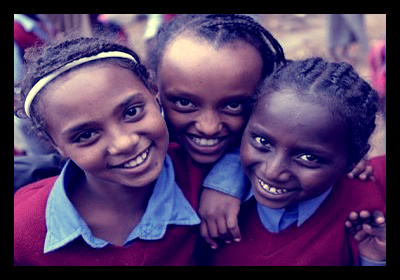
Each of the following organizations crosses borders and boundaries to bring quality education to every child. Many of them have lofty goals regarding global education, but many have earned a worldwide reputation for the work they have done to achieve these goals.
Association for Childhood Education International
The Association for Childhood Education International (ACEI) is a worldwide community of educators and advocates for education reform. Their mission is “to promote and support in the global community the optimal education, development and well-being of children.” To achieve this, they host the Global Summit on Childhood and the Institute for Global Education Diplomacy. The Summit invites professionals to gather and discuss issues facing children and the state of childhood, from education to health and well-being. Through the Institute, tentatively scheduled for 2015, ACEI brings together diplomats and professionals in education to find solutions to the problems preventing children from receiving a suitable education.
Education International
A coalition of 30 million professionals in education representing 400 organizations in 170 countries and territories comprises Education International. Their goal is to promote quality education, equity in society and the interests of other education employees. As part of their campaign, they combat racism and xenophobia that prevents children from receiving a quality education. They challenge various kinds of discrimination, including exclusion on the basis of gender, sexual orientation, socio-economic status, race and ethnic origin. They also reach out to other unions and global federations whose interests include furthering global education.
The Global Partnership for Education
The Global Partnership for Education (GPE) works in nearly 60 developing countries via a multilateral partnership that includes donor governments, international organizations and teachers. They hope to “galvanize and coordinate a global effort to deliver a good, quality education to all girls and boys, prioritizing the poorest and most vulnerable.” Along with their partners, they develop education strategies, promote collaboration in education, share solutions to challenges facing educators, finance the implementation of programs and monitor results and data to assess progress. Since its creation in 2002, the GPE states that they have aided in putting 22 million more children in school, increased literacy rates worldwide to 81 percent in 2010 and increased primary school completion to 75 percent in 2011. Since 2004 they have trained 300,000 teachers, built and equipped 53,000 classrooms and purchased and distributed 50 million textbooks.
Plan International
Founded more than 75 years ago, Plan International is one of the oldest and largest children’s development organizations in the world. Plan’s ideal world is one in which “all children realize their full potential in societies that respect people’s right and dignity.” They hope to gain lasting improvements in the quality of life of children in developing countries by uniting people across cultures. They aid deprived children, their families, and their communities by enabling them to meet their basic needs and building relationships to increase understanding amongst people of different cultures. In all of their endeavors, the rights of the world’s children take priority.
Save the Children
The goal of Save the Children is to promote global education and the rights of children around the world. To increase the quality of instruction and help ensure lasting education, Save the Children teaches effective teaching strategies to instructors and trains them to engage students. They coach parents and caregivers to help foster learning early on, and offer ways for parents to encourage schoolwork and continued learning outside of the classroom. They also hope to introduce children to artistic expression, encourage learning during and after crisis and invest in the health of children to ensure they don’t fall behind. In 2012, Save the Children reached 9 million children.
UNESCO
The United Nations Education, Scientific and Cultural Organization began in 1945 and is “committed to a holistic and humanistic vision of quality education worldwide, the realization of everyone’s right to education and the belief that education plays a fundamental role in human, social, and economic development.” Their mission is to aid in the building of peace, eradication of poverty and lasting development. They seek to achieve these goals and create an intercultural dialogue through global education. Their membership includes 204 countries, 9 of which are associate members.
UNICEF
Established in 1946, the United Nations International Children’s Emergency Fund imagines a world in which the rights of every child are recognized. Their goals include reducing inequities and discrimination, fulfilling global education goals such as the 2 Millennium Goals that focus on education, achieving gender equality and equity in education, ensuring that every child has the opportunity to learn and continuing education during and after a crisis.
– Kristen Bezner















Leave a Reply